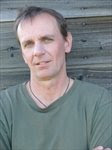 |
| the view across the road from the Nashlyn Community Pasture. |
We need public policy and grassland advocacy that will ensure that any conservation concerns--whether it is an endangered species or carbon sequestration--will give our cattle producers who graze on our remaining native grass the right kind of incentives.
Earlier this week Lorne Scott and I drove to the town of Consul to meet with some of the ranchers who raise livestock in Saskatchewan's southwest corner, where the grass is short and the moisture scarce. We thought there might be ten show up for our discussion in the hall, but by the time we sat down to talk it was twenty-six, including three or four women.
Many who came were very concerned about the Greater Sage-Grouse Emergency Protection Order. They showed Lorne and me a Rural Municipality map they had prepared outlining the zone in which the order will apply. There were strong feelings in the room and some strong words came out right away on the topic of the order and what it means for their livelihoods and the value of the Crown grassland they lease. We heard several ranchers state clearly that the order as it is will hurt their ability to make a living. They spoke eloquently about their experience with Sage Grouse and other wildlife, and said that they feel betrayed because the EPO seems to attack the very people who are living on the prairie and practicing a form of agriculture that prevents it from being plowed and seeded to crops. They also said that they believe the conservation agencies and organizations focus too much on this or that species without looking at the overall picture from a balanced perspective.
Regrettably, we did not have enough time to talk through all of the details of the order and air every concern, mostly because there were other things we had gathered to talk about.
But they made it very clear that there will be no progress on any other topics, possible partnerships or cooperation with conservation groups until the immediate concerns of the EPO are addressed. That seems fair. This is spring and people with land affected by the EPO have to know what they can and cannot do when they head out to their pastures to work.
Before the meeting was over, there was agreement to meet again. The plan is for everyone interested to read the EPO on their own, make notes, and then we will meet to nail down the parts of it that need to be changed for livestock producers to be able to carry on with their operations without incurring new costs or forgoing income. Once we have that done, the next step will be to take it forward to the Federal Government explaining the exact concerns of producers.
Here is a link to the EPO online. It is only nine pages with the important details on what is and is not allowed (actually half pages because as a federal document it has to be in both English and French), and then more than 100 pages that simply list the legal descriptions of the affected provincial and federal lands."
It is hard to say where this will all end up, but the conservation community has a moral obligation to work with producers to ensure that the wider public pays the costs of Sage Grouse recovery. Any measures that pile most or all of the costs onto the ranchers who lease Crown grasslands will hurt all prairie conservation goals in the long run.
 |
| horned larks, the first grassland songbird to return in spring, were courting just inside the fence line of the Nashlyn pasture |
.





Trevor I note a lot of concern for grassland habitats and birdlife.
ReplyDeleteI believe this is crucial to move the concerns along towards a joint stewardship for the grasslands and the affected species.
WHERE is the actual macro and micro mapping of the habitat components, habitat complexes, and the critical key bird nesting, display, and overlapping home ranges of the Sage Grouse, the Sharptail Grouse and associated species?
With this mapping, using satellite and high and low altitude photo imagery, an easily realized consensus is achieveable, in joint stewardship, with grassland ranchers with a varying grazing intensity program which is sensitive to key habitat concentrations and bird and site complexes...
Lets act with inventory of these precious habitat elements.
Steve Dunn
Masters of Science in Remote Sensing And Geographic Mapping
Systems.
PS: I for one will provide pro bono
services to realize this vital Inventory! In the effort to preserve a future for the grasslands and the birds!
Thanks Steve--I did not know you were a mapping guy. That is a generous and interesting offer. A lot can be done with mapping as you say. We were going to talk on the phone sometime I thought. I was away for a few days and just returned on Friday.
ReplyDeleteTrevor, I am confident that the grass lands and habitat on farmed
ReplyDeleteparcels can produce abundance if they are carefully stewarded and the insecticide you spoke of is substitued by a narrow band type.
The large community pasture holdings call for inventory mentioned, and protection by current stakeholders who will aide in securing Provincial protection to keep these large prairie blocks out of cultivation and energy site modifiction.
Resource mapping has distict value in securing awareness and protection. Muuh more effective than oral and written testimony.
Best to You!
Speak with You Soon.
ok, we are open to all suggestions--because we need new ways to increase awareness.
ReplyDelete